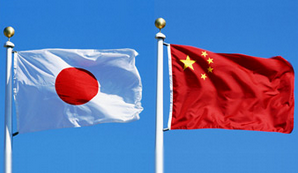(BGF) – Late last month Xu Xinbo wrote an Op-Ed piece for The New York Times in which he argued that the United States should allow Japan and China to resolve the territorial dispute on their own. U.S. action, such as reaffirming the U.S.-Japan security treaty, Xinbo argues, only serves to embolden Japan to become more aggressive toward China. Rather than have U.S. involvement destabilize the situation, Xinbo argues that the U.S. should take a step back from the dispute. Moreover, Japan and China should take steps to increase communication amongst their vessels in the East China Sea to minimize the likelihood of accidents and an escalation of tensions. The ultimate solution, according to Xinbo, is to have Japan and China table the dispute, as happened in the 1970s. This Op-Ed provides an interesting counter-point to the BGF conference on April 24th, in which the participants agreed that the Senkaku/Diaoyu Islands dispute should be tabled for future generations, yet argued the U.S. had an important role to play in the dispute. To read the full article click here or visit The New York Times website. To view the BGF conference click here.
America Should Step Back from the East China Sea Dispute
By Wu Xinbo
SHANGHAI — The United States has been a destabilizing force in the dispute between China and Japan over the sovereignty of a small chain of islands in the East China Sea. Not only did Washington create the problem in 1971 by arbitrarily returning the administrative rights of the islands to Japan, but America’s claim that its security alliance with Japan applies to the tiny islands has emboldened Tokyo to take a more aggressive stance toward Beijing.
A peaceful resolution of the issue ultimately depends on the willingness of the Japanese government to acknowledge the dispute and pursue more reconciliatory policies toward China. But a major factor is whether Washington will shift its strategy to help rein in Japan and adopt a more reasonable stance that accommodates Beijing’s concerns about its maritime interests and security environment.
When Chinese-Japanese relations moved toward normalization after Richard Nixon’s visit to China in 1972, Tokyo and Beijing agreed to shelve the disagreement over who owned the islands, called the Senkaku by Japan and the Diaoyu by China. The situation was largely ignored for decades.
But Tokyo’s decision to nationalize the islands in September 2012, prompted by the right-wing former governor of Tokyo, Shintaro Ishihara, was a major change to the status quo and a violation of the tacit understanding between Beijing and Tokyo to let sleeping dogs lie. China had no choice but to react strongly: Beijing sent its patrol boats to the territorial waters surrounding the Diaoyu and has since maintained regular patrols there aimed at asserting its claim to sovereignty.
Prime Minister Shinzo Abe of Japan, a tough-talking nationalist who’s been in office since December 2012, takes an uncompromising position and denies that there is any question over the islands’ sovereignty. This stance, coupled with a more active security policy and other confrontational policies toward China, shows how Japan has transformed under Mr. Abe into a more assertive power. This shift reminds Chinese people of Japanese aggression in the World War II era, which is a very sensitive issue in China.
The United States has acted as Japan’s enabler. Washington supports efforts in Tokyo to reinterpret the country’s post-World War II pacifist Constitution to allow the military to act in conjunction with allies beyond Japanese territory. Washington encourages Mr. Abe to pursue a more active and assertive security policy, including the buildup of the Japanese military, which may lead to a further strengthening of Japan’s already advanced air and naval forces. And Washington asserts that the United States-Japan security alliance applies to the East China Sea island dispute; the American military has intensified its cooperation with the Japanese military in the area.
These policies suggest that the United States, while claiming to be neutral, not only supports the Japanese position over the islands but, more importantly, prods Japan to be more aggressive toward China. Beijing feels pressure to sustain, and even step up, its patrols in the East China Sea so as to resist the combined American-Japanese power.
Click here to continue reading.
